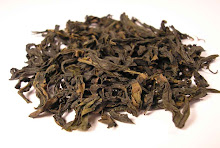
Afternoon Tea - a great British Tradition
Having afternoon tea has been a fashionable social event in London for over 150 years. Tea is undoubtedly the British national drink and having afternoon tea is an important part of English life. Having tea in the glamorous and luxurious surroundings of a grand hotel is an indulgence for the extravagant traveller and the Londoner alike. The London Grand Hotel Tea is something for connoisseurs. Since the late 1880s grand hotels have been offering afternoon tea to their guests in style. Having afternoon tea at the Ritz or the Savoy became the hallmark of elegance. Afternoon tea continued to be very fashionable throughout the Edwardian period (1901-1910). By 1910, when the Argentinean Tango arrived, the London grand hotels began to host tea dances. By the early 1920s, the tea dance became so popular that it continued to be an important social event until World War II. Some of London's grand hotels such as the Savoy and the Waldorf Astoria on Aldwych have kept the tradition and still offer tea dances.
The History of Afternoon Tea
In 1662, Catherine of Braganza of Portugal married Charles II of the English House of Stuart. It was Catherine of Braganza who made tea the official court beverage in the 1660's. At this time tea was a rare luxury good because it was highly taxed, expensive and scarce. It was the famed English East India Company that formally introduced tea to England in the 1600s. The East India Trading Company, which had a monopoly on China tea, presented Charles II with small gifts of tea for Catherine in 1664 and 1666 in an attempt to please him. The British tradition of afternoon tea is said to have started with Anna, the 7th Duchess of Bedford in the early 1840s. In the 19th century dinner was not served until 8.30 or 9.00 pm in the evening and the Duchess who always was hungry by mid-afternoon decided to ask her staff to serve bread, butter, cakes, biscuits and tea. Soon it became a fashionable pastime of the upper classes to have afternoon tea. The 19th century then saw the opening of tea houses such as Lyon's in London and the popularization of tea in America through Sir Thomas J. Lipton in 1890 who owned tea estates in Ceylon.
Rules, Etiquette and Dress Code
Afternoon tea first became fashionable in the 1840s, 200 years after the first tea was brought from China. In the 19th century, having afternoon tea was a graceful event, which was governed by a complex set of rules and etiquette. Tea-drinking prompted silversmiths and linen manufacturers to produce appropriate table ware and even the tea gown was invented. The dress code for traditional afternoon tea is still smart. Ladies don't have to wear dresses, hats and gloves anymore, but gentlemen are required to wear a jacket and tie in most places. At Claridge's gentlemen are advised to ask in the men's cloakroom for a tie. Afternoon tea is served at approximately four o'clock. However, London grand hotels, generally serve tea from 3.30 to 5 pm. In most places an advance booking is advisable, if not necessary. For instance, for the Ritz Hotel we recommend to make a booking for afternoon tea several weeks in advance in order to avoid disappointment.







No comments:
Post a Comment